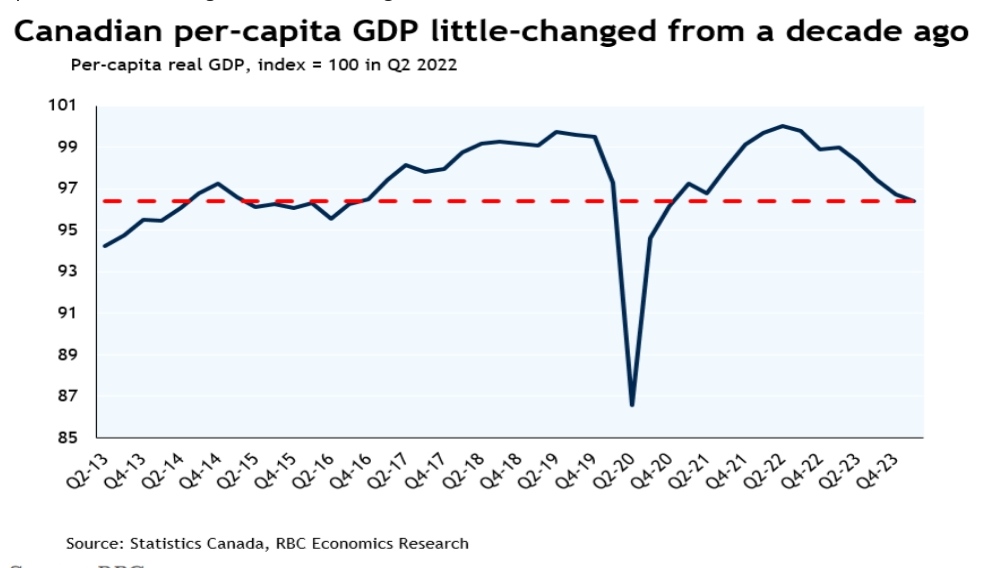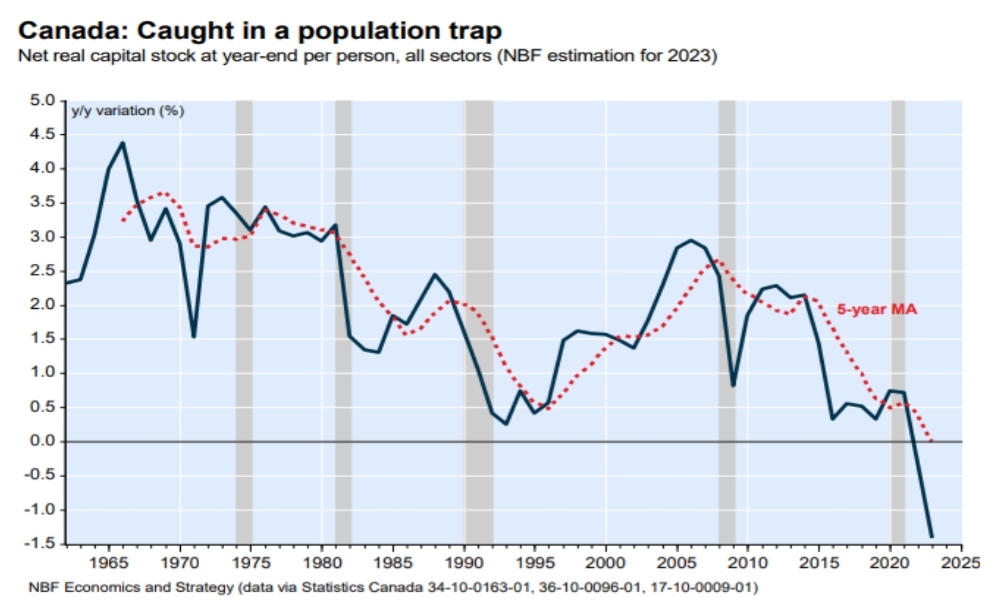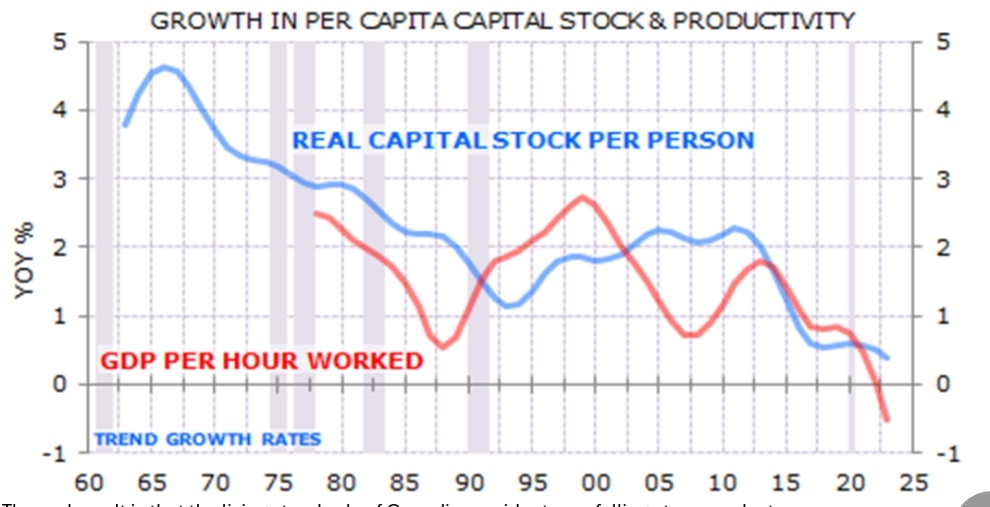Under Trudeau’s watch Canada marches into lost economic decade

As per statistics released, Canadian GDP estimate for Q1 2024 is simply dismal.
The economy expanded at an annualised rate of 1.7%, lower than consensus estimates of a 2.2% increase and more than a full percentage point below the Bank of Canada’s forecast in its April Monetary Policy Report.
Canada’s GDP increase was also well below the 3.0% population growth rate. As a result, GDP per capita continued its downward trend in the March quarter and is now 3.5% below the peak recorded at the beginning of this monetary tightening cycle.
A decline of this magnitude has never been seen outside of a recession. It has also meant that Canada’s per capita GDP is little changed from a decade ago:

Canadians just experienced a lost decade, with all progress made in the first 8 years wiped out within the past two.
A decline in per-capita GDP tends to mean a declining quality of life, as the same economic output is expected to carry more people.
This means a deep per capita recession and falling living standards. The past 15 years have delivered the slowest growth in real per capita household disposable income on record:
Per capita GDP growth is also tracking at its lowest rate in decades outside of the pandemic lockdown.
The problem is that Canada has switched to population-led growth model that has starved the nation of capital deepening investment.
Accordingly, Canada’s productivity growth has suffered from capital shallowing as immigration-driven population growth has outrun business, infrastructure, and housing investment:

The same situation has occurred in Australia, where the real-capital stock per person has collapsed, wrecking productivity:

The end result is that the living standards of Canadian residents are falling at a record rate.




